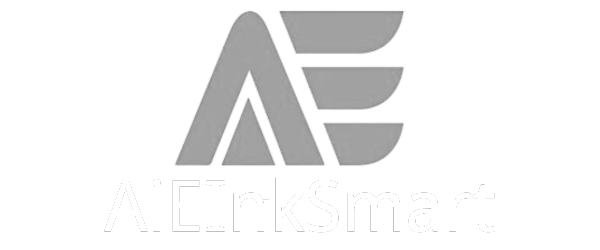
You encounter digital price tags every time you visit a modern store. These devices use digital pricing technology to enhance accuracy and improve the customer experience. As a customer, you depend on precise prices for every product. Digital price tags integrate with Electronic Shelf Labels, ESL Price Tag units, and an ESL Gateway AP to keep retail operations efficient. Esl Retail systems rely on these solutions to ensure customers always see up-to-date information. This technology supports both accuracy and reliability for every customer in fast-paced retail operations.
Advanced Hardware in Digital Price Tags

Electronic Display Technologies
E-Ink vs. LCD/LED Displays
You encounter several display technologies when you look at digital price tags. Each technology offers unique benefits for retail operations. The table below summarizes the most common types and their market trends:
| Display Technology | Key Features and Advantages | Market Share / Growth Trend |
|---|---|---|
| Fully Graphic E-paper Displays | Paper-like appearance, low power consumption, high resolution, supports graphics & animations | Fastest growing segment; highest CAGR; rapidly gaining dominance |
| Segmented E-paper Displays | Basic e-paper technology, low power, limited graphics capability | Used but less favored compared to fully graphic e-paper |
| LCDs | Maintenance-free, low power consumption, suitable for 7-10 inch displays | Used but less favored; 7-10 inch segment growing due to balance of size and compactness |
Fully graphic e-paper displays now dominate the market. You benefit from their paper-like look and energy efficiency. LCDs still play a role, especially for larger tags, but e-paper’s rapid growth signals a shift in the industry.
Power Efficiency and Battery Life
You rely on digital price tags to deliver consistent performance. E-paper displays use very little power, which extends battery life and reduces maintenance. LCDs also offer low power consumption, but e-paper tags often last longer between battery changes. This efficiency ensures you see accurate prices without frequent disruptions.
Embedded Microcontrollers and Sensors
Processing Capabilities
Digital price tags contain embedded microcontrollers that handle data processing. These chips update prices, manage display content, and communicate with store systems. You experience real-time price changes and reliable information because of these advanced processors.
Environmental Sensing and Adaptation
Some digital price tags include sensors that detect temperature, humidity, or light. These sensors help the tags adapt to changing conditions in the retail environment. For example, a tag might adjust its brightness or alert staff if conditions threaten its performance. This adaptability supports accuracy and reliability.
Physical Durability and Design
Tamper Resistance and Damage Protection
You expect digital price tags to withstand daily wear and tear. These tags are heavier and thicker than traditional paper labels, making them more vulnerable to accidental damage in busy stores. Retailers use robust holders with locking mechanisms, hinges, and protective covers to prevent breakage and dislodgement. Proper accessories, such as locking rails and impact-absorbing covers, keep tags secure even in high-traffic areas.
- Digital price tags require upgraded holders for durability.
- Protective solutions prevent downtime and maintain functionality.
- Accessories from specialized suppliers help retailers avoid hidden costs.
Adaptability to Retail Environments
Digital price tags often do not fit into holders designed for paper labels. You see retailers upgrade to adjustable, flexible holders that match the size and weight of digital tags. Partnering with a versatile accessory supplier ensures tags fit securely and remain protected. This approach keeps your store looking professional and reduces the risk of accidental loss or damage.
Sophisticated Software for Electronic Shelf Labels
Centralized Management Platforms
Price Control and Automation
You manage prices across your store with centralized software platforms. These systems give you real-time control over every electronic shelf label. You can schedule price changes, automate markdowns, and implement dynamic pricing capabilities. This approach ensures pricing accuracy and reduces manual errors. You benefit from real-time price management, which lets you respond quickly to market trends and competitor actions.
Integration with Inventory and ERP Systems
You connect electronic shelf labels to your inventory and ERP systems. This integration allows you to track inventory levels in real-time. When you sell an item, the system updates both the price and the inventory count instantly. You maintain accuracy in both pricing and inventory management. This seamless connection supports enhanced promotion flexibility, as you can adjust prices based on stock levels or sales events.
Real-Time Data Processing and Updates
Instantaneous Price Changes
You rely on real-time updates to keep your store competitive. When you update a price in your system, every electronic shelf label reflects the change immediately. This process guarantees pricing accuracy and prevents confusion for your customers. You avoid delays that could lead to lost sales or customer dissatisfaction.
Synchronization Across Multiple Locations
You operate multiple stores with ease using real-time synchronization. Your centralized platform pushes updates to every location at once. This ensures that all stores display the same prices and inventory information. You maintain consistency and accuracy, even when managing thousands of electronic shelf labels.
Tip: Real-time data processing helps you avoid pricing errors and keeps your inventory information up to date.
User Interface and Usability
Staff Dashboard Design
You interact with user-friendly dashboards designed for staff. These interfaces display real-time data, including pricing and inventory status. You can quickly identify issues, make adjustments, and monitor performance. The clear layout improves efficiency and reduces training time for new employees.
Customization and Scalability
You customize your electronic shelf label system to fit your store’s needs. The software scales easily, whether you manage a single store or a large chain. You add new labels, update inventory categories, and adjust pricing rules without complex reconfiguration. This flexibility ensures your system grows with your business.
Connectivity and Integration Challenges with Digital Price Tags

Digital price tags rely on seamless connectivity and integration to deliver accurate pricing and efficient operations. You face several challenges when deploying these systems in a retail environment.
Wireless Communication Protocols
Wi-Fi, Bluetooth, and Proprietary Networks
You must choose the right wireless protocol for your digital price tags. Wi-Fi offers broad coverage and high data rates, making it suitable for large stores. Bluetooth provides low energy consumption, which helps extend battery life. Some vendors use proprietary networks designed for electronic shelf labels. These networks optimize communication for low power and high reliability.
| Protocol | Coverage Area | Power Usage | Typical Use Case |
|---|---|---|---|
| Wi-Fi | Large | Moderate | Big-box stores, supermarkets |
| Bluetooth | Medium | Low | Specialty shops, small stores |
| Proprietary | Customizable | Very Low | Large-scale, multi-site chains |
You need to match the protocol to your store’s size and layout. This decision impacts both performance and maintenance.
Signal Reliability and Interference Management
You encounter signal interference from other wireless devices, building materials, and even customer smartphones. To maintain strong connections, you must plan your network layout carefully. Place access points strategically and monitor for dead zones. Regularly test your system to ensure every tag receives updates without delay.
Tip: Use network monitoring tools to identify and resolve interference issues before they affect your pricing accuracy.
Integration with Store IT Infrastructure
Compatibility with POS and ERP Systems
You must ensure your digital price tags work with your existing POS and ERP systems. This compatibility allows you to synchronize pricing and inventory data across platforms. When you update a product’s price or stock level, the change appears instantly on the shelf label. This integration supports accurate inventory tracking and reduces manual errors.
Data Flow and Synchronization
You benefit from smooth data flow between your digital price tags and back-end systems. Real-time updates keep your pricing and inventory information current. You gain better visibility into stock levels and sales trends. This visibility helps you make informed decisions and respond quickly to market changes.
Scalability in Large Retail Environments
Managing Thousands of Digital Price Tags
You may need to manage thousands of digital price tags in a single store. Each tag must connect reliably to your network and receive updates without delay. You should use centralized management software to monitor tag status and automate updates. This approach reduces manual work and ensures consistent pricing.
Network Infrastructure Demands
You must invest in robust network infrastructure to support large-scale deployments. High-density environments require more access points and stronger network management. You should plan for future growth by choosing scalable solutions. This preparation ensures your system remains efficient as your store expands.
Security and Data Protection in Electronic Shelf Labels
Digital price tags bring many benefits, but you must address security and data protection to protect your store and your customer. As you deploy electronic shelf labels, you face new risks that can impact pricing accuracy and customer trust.
Protecting Pricing Data
Encryption and Secure Data Transmission
You need to secure every data transmission between your central system and each shelf label. Encryption protects sensitive information, such as price updates and inventory changes, from interception. Without strong encryption, attackers can exploit insecure protocols, especially those using 433 MHz RF signals. Devices like HackRF or Flipper Zero make it easy for someone to intercept or manipulate data. You must use secure, authenticated channels to keep your pricing accuracy intact and prevent disruptions that could confuse your customer.
Preventing Unauthorized Price Changes
You want to prevent unauthorized users from changing prices on your shelves. Replay attacks and malicious QR codes can allow attackers to manipulate prices or display harmful content. These threats can lead to ransom demands or even disrupt critical infrastructure. As more stores adopt electronic shelf labels, the risk of such attacks grows. You must stay vigilant and update your security measures regularly to protect your customer and maintain pricing accuracy.
Access Control and Authentication
Software-Based Security Protocols
You rely on advanced access control methods to limit who can change prices or settings. Modern systems use token-based authentication, passkeys, and passwordless logins. You can also use biometric checks or behavioral authentication to verify user identity. Just-in-time access restricts elevated permissions to short periods, reducing risk. Zero Trust Privileged Access Management lets you monitor and control every action in real time. These tools help you ensure only authorized staff can make changes, protecting your customer from errors or fraud.
- Token-based authentication
- Passwordless and biometric logins
- Just-in-time access
- Continuous and adaptive authentication
Physical Security Measures
You must also secure the physical devices. Locking mechanisms and tamper-resistant holders prevent unauthorized removal or tampering. You should train your staff to recognize suspicious activity and respond quickly. These steps help you keep your customer safe and your store running smoothly.
Compliance and Privacy Considerations
Regulatory Requirements
You must comply with strict regulations in every major retail market. The table below summarizes key areas:
| Regulatory Area | Key Requirements and Considerations | Best Practice Tips |
|---|---|---|
| Consumer Protection | Ensure price accuracy and transparency to avoid deceptive pricing and false advertising. | Provide clear price information to consumers. |
| Data Privacy | Comply with data protection laws when collecting/processing personal data for personalised pricing. | Provide clear privacy notices explaining data use in pricing. |
| Fair Pricing Practices | Avoid unfair price discrimination against protected groups; prevent price gouging especially during emergencies. | Regularly audit dynamic pricing algorithms for fairness and legal compliance. |
| Competition Law | Prevent algorithmic collusion and abuse of market power through dynamic pricing strategies. | Work with legal experts to ensure compliance and avoid anti-competitive outcomes. |
| Employment Law | Manage workforce impacts due to automation, including consultations and retraining obligations. | Engage proactively with employees, unions, and legal advisors during ESL implementation. |
| Intellectual Property & Licensing | Secure necessary software and hardware licenses; clarify ownership of pricing algorithms to avoid IP disputes. | Conduct due diligence on licenses and ownership agreements for custom algorithms. |
Customer Data Protection
You must protect any customer data your system collects. Always provide clear privacy notices and explain how you use customer information. You should audit your systems regularly to ensure compliance and build trust. When you protect your customer’s data, you strengthen your reputation and encourage loyalty.
Note: Security and privacy are not just technical issues. You must make them part of your daily operations to protect your customer and your business.
Operational and Maintenance Demands of Digital Price Tags
Deployment and Installation
Initial Setup and Configuration
You begin by planning the deployment of digital price tags across your store. The initial setup involves installing each tag, configuring gateways, and connecting the system to your existing IT infrastructure. You must ensure that every tag communicates reliably with the central management platform. This process often requires coordination with IT specialists, especially if you need to integrate with legacy POS systems. Upfront investments include hardware, gateways, and installation services. You may also need to budget for middleware or custom adapters to achieve seamless integration.
Staff Training and Onboarding
You must train your staff to use and maintain the new system. Training covers dashboard navigation, troubleshooting, and basic maintenance tasks. Effective onboarding ensures your team can manage price updates, monitor tag status, and respond to alerts. Well-trained staff help you maximize the benefits of digital price tags and minimize disruptions to retail operations.
Ongoing Maintenance and Support
Battery Replacement and Monitoring
You benefit from long battery life, with most digital price tags lasting five to seven years before needing replacement. This reduces the frequency of maintenance and lowers operational costs. You should still monitor battery status through your management dashboard. Proactive monitoring helps you schedule replacements during low-traffic periods, avoiding interruptions to retail operations.
Software Updates and Troubleshooting
You must keep your system software up to date. Regular updates provide new features, security patches, and performance improvements. Your IT team should monitor for issues and resolve them quickly. Most vendors offer support services to assist with troubleshooting and ensure system reliability.
Cost and Resource Management
Total Cost of Ownership
You need to consider both upfront and ongoing costs when evaluating digital price tag systems. The table below outlines typical expenses over a five-year period:
| Cost Component | Estimated Cost / Description |
|---|---|
| Price per Digital Price Tag | $5 to $10 per label; for 10,000 tags, upfront cost $60,000-$100,000 |
| Gateway Hardware | Approximately $1,200 for 3-4 gateways per 1,000 sqm retail space |
| Software Maintenance Fee | Around $500 annually |
| Support Fees | $1,000 to $3,000 annually |
| Battery Replacement | Rare within 5 years due to 5-7 year battery life |
| Integration with Legacy POS | Potential hidden costs due to middleware, upgrades, and testing |
Over five years, your total cost of ownership includes hardware, installation, software maintenance, and support. Battery replacement costs remain low due to long battery life. Integration with older systems may add expenses, but these are necessary for a complete solution.
Balancing Efficiency with Investment
You face significant upfront costs for hardware, gateways, software, and integration. However, you balance these investments with substantial labor savings, improved pricing accuracy, and faster promotional updates. Many retailers see a payback period of one to three years. You also reduce paper waste and support sustainability goals. To ensure your investment aligns with business objectives, you must analyze SKU count, labor costs, and integration complexity. Strategic planning for system reliability, cybersecurity, and vendor flexibility helps you achieve long-term value.
Tip: A thorough cost-benefit analysis helps you weigh tangible savings against strategic benefits like sustainability and brand reputation.
You face a complex landscape when you deploy digital price tags in your store. Advanced hardware, sophisticated software, and seamless connectivity all play a role in delivering accurate information to every customer. Robust security protects your customer and ensures trust. Operational demands require you to focus on efficiency and reliability. By understanding these five facts, you improve the customer experience and help every customer enjoy clear, up-to-date pricing. Electronic shelf labels support your goal to meet every customer’s needs and expectations.
FAQ
What is the main advantage of digital price tags over paper labels?
You gain real-time price updates and reduce manual errors. Digital price tags let you automate pricing, improve accuracy, and save labor costs. You also support sustainability by reducing paper waste.
How long do digital price tag batteries last?
You can expect most digital price tags to last five to seven years on a single battery. E-paper displays use very little power, which extends battery life and reduces maintenance needs.
Can you integrate digital price tags with existing POS systems?
You can integrate most digital price tag systems with modern POS and ERP platforms. You may need middleware or custom adapters for legacy systems. Always check compatibility before deployment.
Are digital price tags secure from hacking?
You protect your system with encryption, secure authentication, and physical security measures. Regular software updates and staff training help you defend against unauthorized access or tampering.
What happens if a digital price tag loses connection?
You see the last updated price displayed on the tag. Most systems store recent data locally. You should restore connectivity quickly to resume real-time updates.
How do you maintain digital price tags?
You monitor battery levels, update software, and inspect physical holders. Most management platforms provide dashboards for easy monitoring. You schedule maintenance during low-traffic hours to avoid disruptions.
Do digital price tags support promotions and dynamic pricing?
You can schedule promotions, automate markdowns, and implement dynamic pricing rules. Centralized management platforms let you adjust prices instantly across all locations.
What is the typical cost of deploying digital price tags?
You invest $5 to $10 per tag, plus costs for gateways, software, and support. Over five years, you balance upfront investment with labor savings and improved pricing accuracy.


